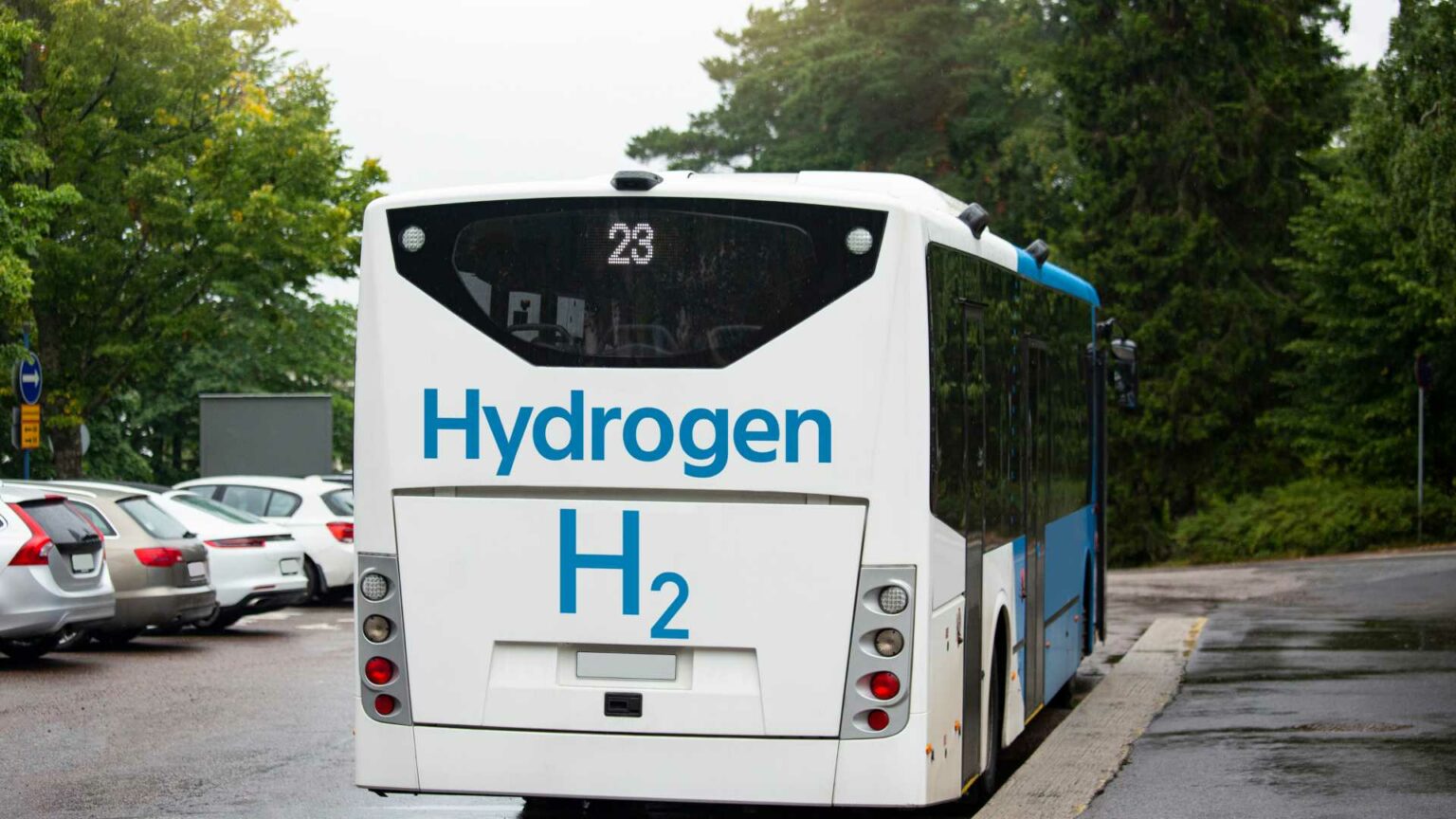The Future Of European Transit: Hydrogen Vs. Battery Buses

Table of Contents
Battery-Electric Buses: The Current Frontrunner
Battery-electric buses (BEBs) are currently leading the charge in the transition to sustainable public transport across Europe. Their prevalence is largely due to several key advantages:
Advantages of Battery Electric Buses:
- Lower Upfront Cost: Compared to hydrogen buses, BEBs boast a significantly lower initial purchase price. This makes them a more attractive option for cities with budget constraints, enabling wider adoption.
- Established Charging Infrastructure: While expansion is certainly needed, a charging infrastructure for electric vehicles is already being developed in many European cities. This existing network reduces the initial investment hurdle compared to building a new hydrogen refueling network.
- Mature Technology & Continuous Improvement: Battery technology is rapidly evolving. Improvements in range, lifespan, and charging times are constantly being made, addressing key concerns about the practicality of BEBs.
- Lower Maintenance: Electric motors have far fewer moving parts than combustion engines, resulting in lower maintenance costs over the lifetime of the bus.
- Reduced Noise Pollution: BEBs operate significantly quieter than their diesel counterparts, contributing to a more pleasant urban environment.
Disadvantages of Battery Electric Buses:
- Limited Range: Compared to hydrogen buses, BEBs have a shorter operating range, requiring more frequent charging stops.
- Range Anxiety: The limited range contributes to "range anxiety," a concern for operators worried about unexpected delays or stranded buses.
- Environmental Impact of Battery Production: The extraction of raw materials and the manufacturing process of batteries have significant environmental impacts, including carbon emissions and resource depletion. Recycling infrastructure is still developing.
- Electricity Grid Dependency: A substantial increase in electric bus adoption will place additional strain on existing electricity grids, requiring investment in grid infrastructure upgrades.
- Higher Energy Consumption (in some cases): Depending on electricity generation sources, the overall energy consumption per kilometer can be higher than that of hydrogen buses fueled by green hydrogen.
Hydrogen Buses: The Emerging Contender
Hydrogen fuel cell buses represent a potentially compelling alternative to battery-electric solutions, offering a different set of advantages and disadvantages.
Advantages of Hydrogen Buses:
- Extended Range: Hydrogen buses boast a significantly longer range than battery-electric buses, reducing the need for frequent refueling stops.
- Rapid Refueling: Refueling a hydrogen bus takes only a few minutes, similar to refueling a diesel bus, making it a more practical solution for high-frequency routes.
- Potential for Green Hydrogen: The use of green hydrogen, produced from renewable energy sources, would make hydrogen buses virtually emission-free throughout their entire lifecycle.
- Reduced Grid Reliance: Hydrogen buses are less reliant on the electricity grid than battery-electric buses, potentially reducing strain on existing infrastructure.
- Less Impact on Electricity Infrastructure: As they do not directly draw power from the grid, they avoid contributing to potential electricity grid overload.
Disadvantages of Hydrogen Buses:
- High Initial Cost: The upfront cost of hydrogen buses and the necessary refueling infrastructure is currently much higher than that of battery-electric buses.
- Limited Refueling Infrastructure: The lack of widespread hydrogen refueling infrastructure is a significant barrier to their adoption.
- Hydrogen Production & Storage Challenges: Producing and storing hydrogen safely and efficiently is complex, with potential energy losses and environmental concerns related to leakage.
- Safety Concerns: Hydrogen is flammable, raising safety concerns related to storage, transportation, and handling.
- Lower Energy Efficiency (in some scenarios): The energy efficiency of hydrogen fuel cell technology can be lower than battery-electric systems under certain operational conditions.
Comparing the Two: Key Factors for Decision-Making
Choosing between battery-electric and hydrogen buses requires a careful evaluation of several key factors:
Total Cost of Ownership (TCO):
A comprehensive life-cycle cost analysis, considering initial investment, operating expenses (including energy costs), maintenance, and potential resale value, is crucial for determining the true economic viability of each technology.
Environmental Impact:
A complete life cycle assessment (LCA) is essential, encompassing the environmental impacts of manufacturing, operation, and end-of-life disposal of both the buses and their associated infrastructure. The source of electricity for charging BEBs and the method of hydrogen production significantly influence the overall carbon footprint.
Infrastructure Requirements:
The development and deployment of charging stations for BEBs versus hydrogen refueling stations require significant investment. The cost, feasibility, and environmental impact of building these infrastructures need to be carefully evaluated.
Technological Advancement:
Both technologies are under continuous development. Future advancements in battery technology, particularly in energy density and charging speed, and advancements in hydrogen production and storage, could significantly alter the cost-effectiveness and environmental impact of each option.
Conclusion: Choosing the Right Path for the Future of European Transit
Both battery-electric and hydrogen buses offer promising pathways towards sustainable European transit. Battery-electric buses currently benefit from lower upfront costs and a developing charging infrastructure, while hydrogen buses offer longer ranges and faster refueling. A blended approach, deploying both technologies strategically based on route requirements and infrastructure availability, might be the most practical solution in the near future. Investing in the future of European transit necessitates a commitment to sustainable transport options. Explore sustainable transport options and learn more about hydrogen and battery buses to make informed decisions about the future of your city's public transport. Invest in the future of European transit – it’s a journey worth taking.

Featured Posts
-
 Donate Your Cavs Tickets A New And Easy Way To Give Back
May 07, 2025
Donate Your Cavs Tickets A New And Easy Way To Give Back
May 07, 2025 -
 Adidas Anthony Edwards 2 Everything We Know So Far
May 07, 2025
Adidas Anthony Edwards 2 Everything We Know So Far
May 07, 2025 -
 Germanys New Chancellor A Path To Renewed European Influence
May 07, 2025
Germanys New Chancellor A Path To Renewed European Influence
May 07, 2025 -
 Chestit Rozhden Den Dzheki Chan 71 Godini Izplneni S Ekshn
May 07, 2025
Chestit Rozhden Den Dzheki Chan 71 Godini Izplneni S Ekshn
May 07, 2025 -
 Wnba Free Agency Aces Gamble On Parker Tyus And Evans
May 07, 2025
Wnba Free Agency Aces Gamble On Parker Tyus And Evans
May 07, 2025
